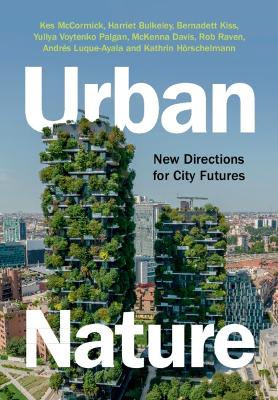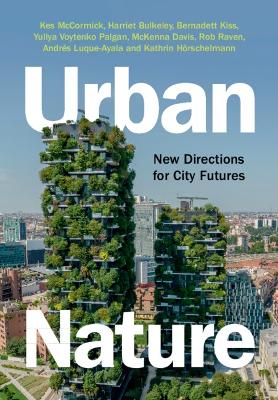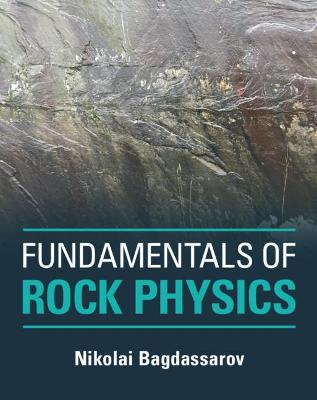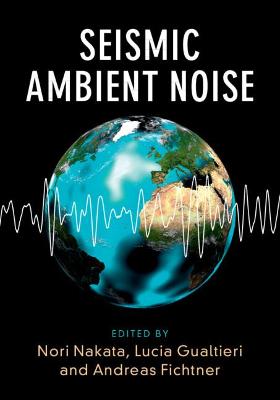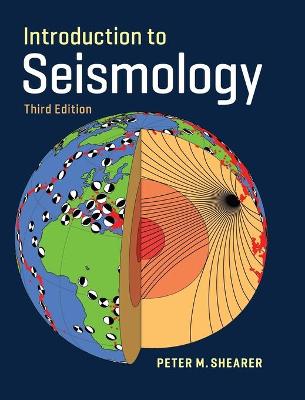Digital Records, Heritage Conservation and Post-earthquake Re-construction in Chile
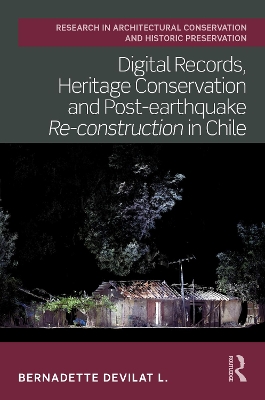 portes grátis
portes grátis
Digital Records, Heritage Conservation and Post-earthquake Re-construction in Chile
Devilat L., Bernadette
Taylor & Francis Ltd
04/2025
270
Dura
9780367776237
Pré-lançamento - envio 15 a 20 dias após a sua edição
Descrição não disponível.
List of figures
List of abbreviations
Acknowledgements
Preface
Introduction
Situating the argument
Earthquakes in Chile
Re-construction and record
Structure of the book
Chapter 1: Built heritage conservation
1.1. A brief history of conservation
1.1.1. Initial attempts
1.1.2. Rome and beyond
1.1.3. Middle Ages
1.1.4. From the Renaissance
1.1.5. The becoming of heritage
From the Conservation movement
Non-monumental heritage
The classification of heritage
The internationalisation of heritage
1.2 Why conserve?
1.2.1. Living heritage: tangible and intangible
1.2.2. Sustainability and economic value
1.2.3. Tourism
1.2.4. Memory and the construction of history
1.3 How to conserve?
1.3.1. Concepts of intervention in built heritage
1.3.2. Reconstruction and re-construction
1.3.3. Time in built heritage restoration
1.3.4. Continuous conservation
1.3.5. Two intervention extremes
1.4. Final remarks
Chapter 2: Recording heritage buildings
2.1. Architectural representation, building and measuring
2.1.1 Building as recording
2.1.2. Architectural treatises
From building to drawing
Words instead of images
Standardisation
2.1.3. Other records
2.2. Surveying buildings
2.2.1. Hand-measuring method
2.2.2. Photography
2.2.3. 3D imaging
Stereo-photogrammetry
Photogrammetry
2.2.4. 3D scanning using projected light
2.2.5. 3D-laser-scanning
2.3. The rise of digital recording technologies
2.3.1. Products from the 3D record
Architectural representations
Visualisations
A new aesthetic
2.3.2. Designing from the 3D scan data
2.3.3. The paradox of the complete record
2.3.4. Record and archive
2.3.5. Continuous modelling and design
2.3.6. Visual replica
2.4. Final remarks
Chapter 3: Record and reconstruction in the face of destruction
3.1. Potential destruction
3.1.1. The record
3.1.2. Rebuilding as replica
3.1.3. The paradox of the original
3.1.3.1. Reconstruction as improvement
3.1.3.2. Programmed rebuilding - Ise shrines
3. The 3D record to question physical rebuilding
3.2. Recording for re-construction
3.2.1. Documenting to manage risk
3.2.2. Post-destruction assessment and documentation
Surveying buildings after earthquakes
3D-laser-scanning as a post-earthquake surveying tool
Continuous recording
Assessing damage by comparing records
3.3. Post-earthquake intervention of heritage areas
3.3.1. Building techniques in reconstruction and re-construction
3.4. Concluding remarks
Chapter 4: Reconstruction of heritage areas in Chile
4.1. Built heritage in Chile
4.1.1. Continuous destruction because of earthquakes
4.1.2 Heritage stance
4.1.3. Recording heritage buildings
4.1.4 Mitigation of heritage damage
4.2. Case studies
4.2.1. Two earthquakes
4.2.2 Chilean heritage areas
4.2.3. Tarapaca
4.2.4. Zuniga
4.2.5. Lolol
4.3. Reconstruction after earthquakes in Chile
4.3.1. Emergency period
4.3.2. Permanent housing
4.3.3. Post-earthquake surveys
4.3.4. 2005 earthquake
4.3.5. 2010 earthquake
Creation of the Heritage Reconstruction Programme
Lessons learned from 2005 to 2010
4.4. Persisting challenges
4.4.1. Emergency period
4.4.1.1. Indiscriminate demolition
4.4.1.2. Built Heritage perception
4.4.2. Reconstruction process
4.4.2.1 Integral approach?
4.4.2.2. Lack of evaluation
4.4.2.3. Scalability
4.4.2.4. New heritage dwellings
4.5. Concluding remarks
Chapter 5: the record
5.1. Data capture on-site
5.1.1. Documenting the built environment
5.1.2. Tarapaca
5.1.3. Zuniga
5.1.4. Lolol
5.1.2. Inhabitants' perception
5.2. Visualisation
Limitations
5.3. The record for analysis
5.3.1. Post-earthquake surveys
From measured drawing to 3D-laser-scanning
5.3.2. Architectural design, heritage elements and the sustainability of the new 'heritage' dwellings
From 2005 to 2010
The architectural elements of heritage
Architectural design and building techniques
5.3.3. The paradox of authentic reproduction
The record throughout time: determining the original
5.4. Concluding remarks
Chapter 6: Re-construction alternative
6.1. Documenting to mitigate risk
6.1.1. Mitigation retrofitting
6.1.2. Integrating inhabitants
6.2. Designing from the record
6.2.1. Time
6.3.2. Spatial use: the inhabited record
Inhabiting a reconstructed house
6.3.3. Sustainability and materiality
6.3. Re-construction
6.4.1. Tarapaca - memory
Re-construction plan
The memory of earthquakes
6.4.2. Zuniga - use
6.4.3. Lolol - in-between
Post-earthquake and pre-restoration
Repair, retrofit & partial re-construction
6.4. Concluding remarks
Conclusions
Methodology
As a post-earthquake documenting tool
As a basis for analysis and design
Going beyond the buildings
Implications
New Buildings for Old
Mitigation as conservation
Continuous transformation
Projections
References
Index
List of abbreviations
Acknowledgements
Preface
Introduction
Situating the argument
Earthquakes in Chile
Re-construction and record
Structure of the book
Chapter 1: Built heritage conservation
1.1. A brief history of conservation
1.1.1. Initial attempts
1.1.2. Rome and beyond
1.1.3. Middle Ages
1.1.4. From the Renaissance
1.1.5. The becoming of heritage
From the Conservation movement
Non-monumental heritage
The classification of heritage
The internationalisation of heritage
1.2 Why conserve?
1.2.1. Living heritage: tangible and intangible
1.2.2. Sustainability and economic value
1.2.3. Tourism
1.2.4. Memory and the construction of history
1.3 How to conserve?
1.3.1. Concepts of intervention in built heritage
1.3.2. Reconstruction and re-construction
1.3.3. Time in built heritage restoration
1.3.4. Continuous conservation
1.3.5. Two intervention extremes
1.4. Final remarks
Chapter 2: Recording heritage buildings
2.1. Architectural representation, building and measuring
2.1.1 Building as recording
2.1.2. Architectural treatises
From building to drawing
Words instead of images
Standardisation
2.1.3. Other records
2.2. Surveying buildings
2.2.1. Hand-measuring method
2.2.2. Photography
2.2.3. 3D imaging
Stereo-photogrammetry
Photogrammetry
2.2.4. 3D scanning using projected light
2.2.5. 3D-laser-scanning
2.3. The rise of digital recording technologies
2.3.1. Products from the 3D record
Architectural representations
Visualisations
A new aesthetic
2.3.2. Designing from the 3D scan data
2.3.3. The paradox of the complete record
2.3.4. Record and archive
2.3.5. Continuous modelling and design
2.3.6. Visual replica
2.4. Final remarks
Chapter 3: Record and reconstruction in the face of destruction
3.1. Potential destruction
3.1.1. The record
3.1.2. Rebuilding as replica
3.1.3. The paradox of the original
3.1.3.1. Reconstruction as improvement
3.1.3.2. Programmed rebuilding - Ise shrines
3. The 3D record to question physical rebuilding
3.2. Recording for re-construction
3.2.1. Documenting to manage risk
3.2.2. Post-destruction assessment and documentation
Surveying buildings after earthquakes
3D-laser-scanning as a post-earthquake surveying tool
Continuous recording
Assessing damage by comparing records
3.3. Post-earthquake intervention of heritage areas
3.3.1. Building techniques in reconstruction and re-construction
3.4. Concluding remarks
Chapter 4: Reconstruction of heritage areas in Chile
4.1. Built heritage in Chile
4.1.1. Continuous destruction because of earthquakes
4.1.2 Heritage stance
4.1.3. Recording heritage buildings
4.1.4 Mitigation of heritage damage
4.2. Case studies
4.2.1. Two earthquakes
4.2.2 Chilean heritage areas
4.2.3. Tarapaca
4.2.4. Zuniga
4.2.5. Lolol
4.3. Reconstruction after earthquakes in Chile
4.3.1. Emergency period
4.3.2. Permanent housing
4.3.3. Post-earthquake surveys
4.3.4. 2005 earthquake
4.3.5. 2010 earthquake
Creation of the Heritage Reconstruction Programme
Lessons learned from 2005 to 2010
4.4. Persisting challenges
4.4.1. Emergency period
4.4.1.1. Indiscriminate demolition
4.4.1.2. Built Heritage perception
4.4.2. Reconstruction process
4.4.2.1 Integral approach?
4.4.2.2. Lack of evaluation
4.4.2.3. Scalability
4.4.2.4. New heritage dwellings
4.5. Concluding remarks
Chapter 5: the record
5.1. Data capture on-site
5.1.1. Documenting the built environment
5.1.2. Tarapaca
5.1.3. Zuniga
5.1.4. Lolol
5.1.2. Inhabitants' perception
5.2. Visualisation
Limitations
5.3. The record for analysis
5.3.1. Post-earthquake surveys
From measured drawing to 3D-laser-scanning
5.3.2. Architectural design, heritage elements and the sustainability of the new 'heritage' dwellings
From 2005 to 2010
The architectural elements of heritage
Architectural design and building techniques
5.3.3. The paradox of authentic reproduction
The record throughout time: determining the original
5.4. Concluding remarks
Chapter 6: Re-construction alternative
6.1. Documenting to mitigate risk
6.1.1. Mitigation retrofitting
6.1.2. Integrating inhabitants
6.2. Designing from the record
6.2.1. Time
6.3.2. Spatial use: the inhabited record
Inhabiting a reconstructed house
6.3.3. Sustainability and materiality
6.3. Re-construction
6.4.1. Tarapaca - memory
Re-construction plan
The memory of earthquakes
6.4.2. Zuniga - use
6.4.3. Lolol - in-between
Post-earthquake and pre-restoration
Repair, retrofit & partial re-construction
6.4. Concluding remarks
Conclusions
Methodology
As a post-earthquake documenting tool
As a basis for analysis and design
Going beyond the buildings
Implications
New Buildings for Old
Mitigation as conservation
Continuous transformation
Projections
References
Index
Este título pertence ao(s) assunto(s) indicados(s). Para ver outros títulos clique no assunto desejado.
conservation of built heritage;Digital Records;Heritage Conservation;Post-earthquake Re-construction;Chile;heritage discourses;living heritage
List of figures
List of abbreviations
Acknowledgements
Preface
Introduction
Situating the argument
Earthquakes in Chile
Re-construction and record
Structure of the book
Chapter 1: Built heritage conservation
1.1. A brief history of conservation
1.1.1. Initial attempts
1.1.2. Rome and beyond
1.1.3. Middle Ages
1.1.4. From the Renaissance
1.1.5. The becoming of heritage
From the Conservation movement
Non-monumental heritage
The classification of heritage
The internationalisation of heritage
1.2 Why conserve?
1.2.1. Living heritage: tangible and intangible
1.2.2. Sustainability and economic value
1.2.3. Tourism
1.2.4. Memory and the construction of history
1.3 How to conserve?
1.3.1. Concepts of intervention in built heritage
1.3.2. Reconstruction and re-construction
1.3.3. Time in built heritage restoration
1.3.4. Continuous conservation
1.3.5. Two intervention extremes
1.4. Final remarks
Chapter 2: Recording heritage buildings
2.1. Architectural representation, building and measuring
2.1.1 Building as recording
2.1.2. Architectural treatises
From building to drawing
Words instead of images
Standardisation
2.1.3. Other records
2.2. Surveying buildings
2.2.1. Hand-measuring method
2.2.2. Photography
2.2.3. 3D imaging
Stereo-photogrammetry
Photogrammetry
2.2.4. 3D scanning using projected light
2.2.5. 3D-laser-scanning
2.3. The rise of digital recording technologies
2.3.1. Products from the 3D record
Architectural representations
Visualisations
A new aesthetic
2.3.2. Designing from the 3D scan data
2.3.3. The paradox of the complete record
2.3.4. Record and archive
2.3.5. Continuous modelling and design
2.3.6. Visual replica
2.4. Final remarks
Chapter 3: Record and reconstruction in the face of destruction
3.1. Potential destruction
3.1.1. The record
3.1.2. Rebuilding as replica
3.1.3. The paradox of the original
3.1.3.1. Reconstruction as improvement
3.1.3.2. Programmed rebuilding - Ise shrines
3. The 3D record to question physical rebuilding
3.2. Recording for re-construction
3.2.1. Documenting to manage risk
3.2.2. Post-destruction assessment and documentation
Surveying buildings after earthquakes
3D-laser-scanning as a post-earthquake surveying tool
Continuous recording
Assessing damage by comparing records
3.3. Post-earthquake intervention of heritage areas
3.3.1. Building techniques in reconstruction and re-construction
3.4. Concluding remarks
Chapter 4: Reconstruction of heritage areas in Chile
4.1. Built heritage in Chile
4.1.1. Continuous destruction because of earthquakes
4.1.2 Heritage stance
4.1.3. Recording heritage buildings
4.1.4 Mitigation of heritage damage
4.2. Case studies
4.2.1. Two earthquakes
4.2.2 Chilean heritage areas
4.2.3. Tarapaca
4.2.4. Zuniga
4.2.5. Lolol
4.3. Reconstruction after earthquakes in Chile
4.3.1. Emergency period
4.3.2. Permanent housing
4.3.3. Post-earthquake surveys
4.3.4. 2005 earthquake
4.3.5. 2010 earthquake
Creation of the Heritage Reconstruction Programme
Lessons learned from 2005 to 2010
4.4. Persisting challenges
4.4.1. Emergency period
4.4.1.1. Indiscriminate demolition
4.4.1.2. Built Heritage perception
4.4.2. Reconstruction process
4.4.2.1 Integral approach?
4.4.2.2. Lack of evaluation
4.4.2.3. Scalability
4.4.2.4. New heritage dwellings
4.5. Concluding remarks
Chapter 5: the record
5.1. Data capture on-site
5.1.1. Documenting the built environment
5.1.2. Tarapaca
5.1.3. Zuniga
5.1.4. Lolol
5.1.2. Inhabitants' perception
5.2. Visualisation
Limitations
5.3. The record for analysis
5.3.1. Post-earthquake surveys
From measured drawing to 3D-laser-scanning
5.3.2. Architectural design, heritage elements and the sustainability of the new 'heritage' dwellings
From 2005 to 2010
The architectural elements of heritage
Architectural design and building techniques
5.3.3. The paradox of authentic reproduction
The record throughout time: determining the original
5.4. Concluding remarks
Chapter 6: Re-construction alternative
6.1. Documenting to mitigate risk
6.1.1. Mitigation retrofitting
6.1.2. Integrating inhabitants
6.2. Designing from the record
6.2.1. Time
6.3.2. Spatial use: the inhabited record
Inhabiting a reconstructed house
6.3.3. Sustainability and materiality
6.3. Re-construction
6.4.1. Tarapaca - memory
Re-construction plan
The memory of earthquakes
6.4.2. Zuniga - use
6.4.3. Lolol - in-between
Post-earthquake and pre-restoration
Repair, retrofit & partial re-construction
6.4. Concluding remarks
Conclusions
Methodology
As a post-earthquake documenting tool
As a basis for analysis and design
Going beyond the buildings
Implications
New Buildings for Old
Mitigation as conservation
Continuous transformation
Projections
References
Index
List of abbreviations
Acknowledgements
Preface
Introduction
Situating the argument
Earthquakes in Chile
Re-construction and record
Structure of the book
Chapter 1: Built heritage conservation
1.1. A brief history of conservation
1.1.1. Initial attempts
1.1.2. Rome and beyond
1.1.3. Middle Ages
1.1.4. From the Renaissance
1.1.5. The becoming of heritage
From the Conservation movement
Non-monumental heritage
The classification of heritage
The internationalisation of heritage
1.2 Why conserve?
1.2.1. Living heritage: tangible and intangible
1.2.2. Sustainability and economic value
1.2.3. Tourism
1.2.4. Memory and the construction of history
1.3 How to conserve?
1.3.1. Concepts of intervention in built heritage
1.3.2. Reconstruction and re-construction
1.3.3. Time in built heritage restoration
1.3.4. Continuous conservation
1.3.5. Two intervention extremes
1.4. Final remarks
Chapter 2: Recording heritage buildings
2.1. Architectural representation, building and measuring
2.1.1 Building as recording
2.1.2. Architectural treatises
From building to drawing
Words instead of images
Standardisation
2.1.3. Other records
2.2. Surveying buildings
2.2.1. Hand-measuring method
2.2.2. Photography
2.2.3. 3D imaging
Stereo-photogrammetry
Photogrammetry
2.2.4. 3D scanning using projected light
2.2.5. 3D-laser-scanning
2.3. The rise of digital recording technologies
2.3.1. Products from the 3D record
Architectural representations
Visualisations
A new aesthetic
2.3.2. Designing from the 3D scan data
2.3.3. The paradox of the complete record
2.3.4. Record and archive
2.3.5. Continuous modelling and design
2.3.6. Visual replica
2.4. Final remarks
Chapter 3: Record and reconstruction in the face of destruction
3.1. Potential destruction
3.1.1. The record
3.1.2. Rebuilding as replica
3.1.3. The paradox of the original
3.1.3.1. Reconstruction as improvement
3.1.3.2. Programmed rebuilding - Ise shrines
3. The 3D record to question physical rebuilding
3.2. Recording for re-construction
3.2.1. Documenting to manage risk
3.2.2. Post-destruction assessment and documentation
Surveying buildings after earthquakes
3D-laser-scanning as a post-earthquake surveying tool
Continuous recording
Assessing damage by comparing records
3.3. Post-earthquake intervention of heritage areas
3.3.1. Building techniques in reconstruction and re-construction
3.4. Concluding remarks
Chapter 4: Reconstruction of heritage areas in Chile
4.1. Built heritage in Chile
4.1.1. Continuous destruction because of earthquakes
4.1.2 Heritage stance
4.1.3. Recording heritage buildings
4.1.4 Mitigation of heritage damage
4.2. Case studies
4.2.1. Two earthquakes
4.2.2 Chilean heritage areas
4.2.3. Tarapaca
4.2.4. Zuniga
4.2.5. Lolol
4.3. Reconstruction after earthquakes in Chile
4.3.1. Emergency period
4.3.2. Permanent housing
4.3.3. Post-earthquake surveys
4.3.4. 2005 earthquake
4.3.5. 2010 earthquake
Creation of the Heritage Reconstruction Programme
Lessons learned from 2005 to 2010
4.4. Persisting challenges
4.4.1. Emergency period
4.4.1.1. Indiscriminate demolition
4.4.1.2. Built Heritage perception
4.4.2. Reconstruction process
4.4.2.1 Integral approach?
4.4.2.2. Lack of evaluation
4.4.2.3. Scalability
4.4.2.4. New heritage dwellings
4.5. Concluding remarks
Chapter 5: the record
5.1. Data capture on-site
5.1.1. Documenting the built environment
5.1.2. Tarapaca
5.1.3. Zuniga
5.1.4. Lolol
5.1.2. Inhabitants' perception
5.2. Visualisation
Limitations
5.3. The record for analysis
5.3.1. Post-earthquake surveys
From measured drawing to 3D-laser-scanning
5.3.2. Architectural design, heritage elements and the sustainability of the new 'heritage' dwellings
From 2005 to 2010
The architectural elements of heritage
Architectural design and building techniques
5.3.3. The paradox of authentic reproduction
The record throughout time: determining the original
5.4. Concluding remarks
Chapter 6: Re-construction alternative
6.1. Documenting to mitigate risk
6.1.1. Mitigation retrofitting
6.1.2. Integrating inhabitants
6.2. Designing from the record
6.2.1. Time
6.3.2. Spatial use: the inhabited record
Inhabiting a reconstructed house
6.3.3. Sustainability and materiality
6.3. Re-construction
6.4.1. Tarapaca - memory
Re-construction plan
The memory of earthquakes
6.4.2. Zuniga - use
6.4.3. Lolol - in-between
Post-earthquake and pre-restoration
Repair, retrofit & partial re-construction
6.4. Concluding remarks
Conclusions
Methodology
As a post-earthquake documenting tool
As a basis for analysis and design
Going beyond the buildings
Implications
New Buildings for Old
Mitigation as conservation
Continuous transformation
Projections
References
Index
Este título pertence ao(s) assunto(s) indicados(s). Para ver outros títulos clique no assunto desejado.

